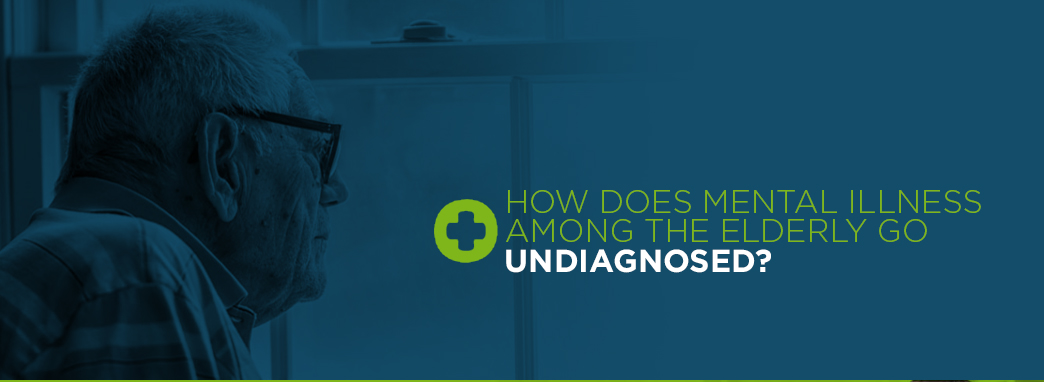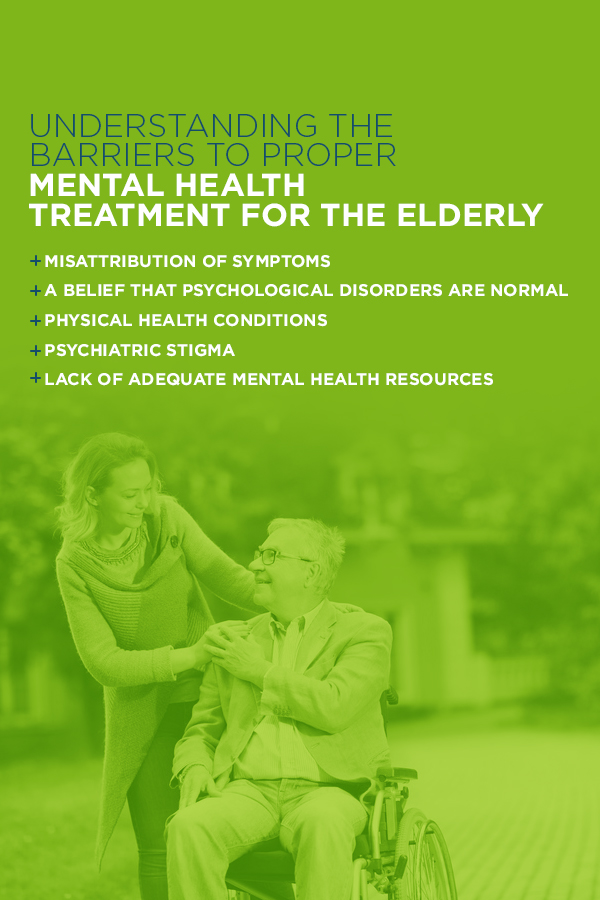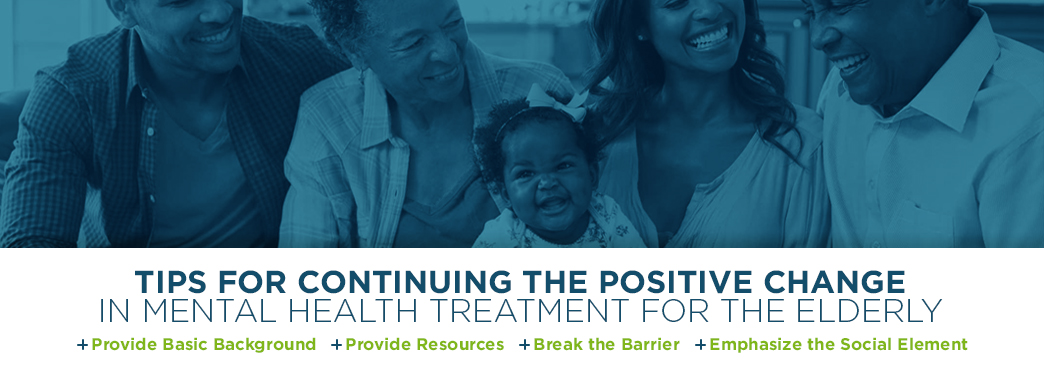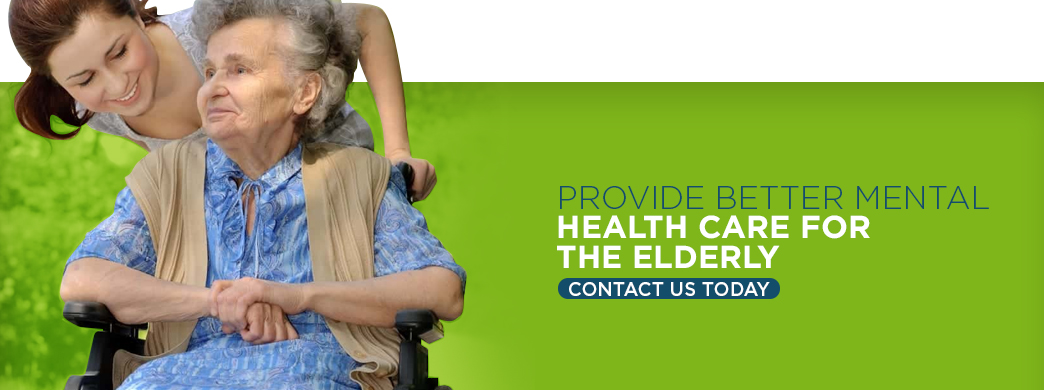How Does Mental Illness Among the Elderly Go Undiagnosed?
Aging populations are shifting the dynamics of healthcare all over the world. By 2060, the number of Americans over age 65 is projected to double from 50 million to about 100 million. This expanding demographic presents health care providers with significant challenges related to chronic diseases like heart disease and diabetes. This population requires more care and resources from a healthcare workforce that's already under a significant amount of strain.
When it comes to mental illness among older adults, the spotlight is on Alzheimer's and other psychological disorders related to dementia. With the prevalence of Alzheimer's set to triple by 2050, it's no wonder that most of the alarm bells are ringing in this area. However, the narrow focus means health care professionals pay much less attention to more common and more treatable mental illnesses like anxiety and depression.
The World Health Organization estimates that about 15 percent of adults over the age of 60 are struggling with a mental disorder. Unfortunately, many clinicians and other health care professionals aren't equipped to detect mental illness in older patients. The difficulty can be due in part to elderly patients being more reticent to talk about their emotions and mental states. It's also easy for professionals to miss some of the more nuanced symptoms of psychological disorders and focus more on obvious physical illnesses.
A report from the Institute of Medicine reveals that nearly one in five American seniors struggles with one or more psychological disorders or substance abuse disorders. It also warns that the healthcare workforce has a serious shortage of professionals with the basic competencies and knowledge to treat mental illness in the elderly. Developing a better understanding of older adults and their mental health needs is the first step for medical professionals learning to spot undiagnosed mental health issues.
Table of Contents
- Understanding the Barriers to Proper Mental Health Treatment for the Elderly
- Positive Changes in Health Care for the Elderly
- Tips for Continuing the Positive Change in Mental Health Treatment for the Elderly
- Provide Better Mental Health Care for the Elderly
Understanding the Barriers to Proper Mental Health Treatment for the Elderly
Part of the shortfall in mental health care for older adults is a strong stigma around the subject, for both patients and those who care for them. Five major barriers keep patients and medical professionals from detecting and addressing mental illness in the elderly.
1. Misattribution of Symptoms
Often, psychological disorders like depression and anxiety go untreated because people believe that the symptoms of the disorder are actually the cause. For example, if one patient has become socially withdrawn, their loved ones and care providers might think something like, "No wonder she has depression. She doesn't socialize with anyone anymore."
In reality, the patient's lack of interest in socialization is a classic symptom of depression. Misattributions like this often lead care providers and loved ones of the patient to think that a quick fix — like encouraging the above patient to "just get out more" — will solve the problem. With this approach, the underlying mental illness is never addressed, and the patient doesn't get the treatment they need. Ultimately, it creates a cycle in which the symptoms worsen the condition over time.
2. A Belief That Psychological Disorders Are Normal
Aging is typically viewed as a "bad" thing in American culture. Research from the American Society on Aging shows we tend to associate aging with loss and decline, and this attitude often extends to mental health. People often believe that anxiety and depression are simply a part of getting older. They tend to reference frequent loss of friends, lack of purpose and physical decline as seemingly obvious reasons for the elderly to experience mental health issues.
The belief that psychological disorders are a naturally-occurring part of aging is a cultural attitude, not fact. Experts on the subject emphasize that aging doesn't have to be synonymous with disease or mental illness. As long as older adults have the proper social and psychological support, they can remain mentally healthy and independent for much longer than many people realize. Treating signs of declining mental health as normal prevents patients from seeking the appropriate treatment and preserving their quality of life.
3. Physical Health Conditions
The interconnections between physical and mental health can be difficult to untangle under the best circumstances, but aging complicates the relationship. When a teenager visits the doctor with reports of insomnia and lack of appetite or energy, depression is one of the more obvious culprits. When an older adult complains of these same symptoms, many possible physical conditions are higher on the list than mental illness.
Anxiety and depression can cause unexpected physical symptoms like back pain or headaches to occur. In the absence of other reported symptoms, a physician may not have adequate reason to believe the pain is related to a mental health disorder. The patient reporting symptoms is often even less likely to connect the dots between physical symptoms and their mental health.
Medications can also play a role in misdiagnosis. Sometimes when seniors experience shifts in mood and personality, it can be due to their multiple medications. Determining what symptoms stem from medication side effects and which are attributable to mental illness is no simple task, especially when the list of medications is a lengthy one.
4. Psychiatric Stigma
Older adults are often reluctant to seek mental health services and treatment for mood or anxiety disorders. About 50 percent of those with serious disorders don't seek treatment and almost 90 percent of those whose symptoms are mild neglect to use mental health services. This is partially due to a strong stigma against psychiatric treatment that prevails among older adults.
Many elderly patients grew up in a time and environment that viewed psychiatric issues as a sign of weakness or moral failure, and as such are unlikely to admit they are experiencing problems. Talking about emotions is something embarrassing and unpleasant for many in this age demographic. Elderly patients are much more likely to describe only physical symptoms, which makes diagnosis more difficult.
Older patients may also fear that revealing symptoms of mental illness will result in the reduction or removal of their independence, leading them to withhold certain symptoms that could lead to a diagnosis.
5. Lack of Adequate Mental Health Resources
Elderly patients have a startling lack of medical, social and psychological resources compared to all other age groups. A Dartmouth University study highlights the worrying decline in the number of geriatric psychologists and psychiatrists. As the number of older adults struggling with psychological disorders is projected to double by 2030, there will only be one geriatric specialist for every 6,000 patients who need them.
Referrals for mental health services are hard to come by for every age demographic. More than half of primary physicians have trouble getting referrals to psychiatrists for patients who need them, and elderly patients often end up at the bottom of the list. Even when they can get a referral, the care might be totally unaffordable or located in a place the patient can't easily access.
Positive Changes in Health Care for the Elderly
The good news is that when older adults seek treatment, it typically works. Depression, for example, is treatable in 80 percent of cases. The elderly's need for better mental health care is finally receiving some of the attention it needs from innovative minds. The most effective changes observed so far come from the implementation of integrated care models. With this form of care, patients receive medical and psychiatric care at the same location. Meanwhile, doctors and psychiatrists collaborate on the best courses of treatment for the patients.
Dr. Stephen J. Bartels of Dartmouth University led a team to study the differences in engagement between the referral model and integrated care. They found that just 30 percent of referral patients came back for mental health services. The integrated care models saw 53.6 percent of patients return for their next mental health visit. The researchers determined that the farther away from the mental health specialist was from the physician, the less likely the patients were to follow through on seeking treatment.
Integrated care also helps remove the stigma the elderly associate with getting mental health help. There's a big perceptual difference in going to see a psychiatrist versus going to see your doctor and getting mental health care while you're there.
One particular program which is succeeding in detecting and treating mental illness in the elderly is the IMPACT model. The acronym represents Improving Mood-Promoting Access to Collaborative Treatment, a model of care in which primary care providers work with a case manager to create a plan for each patient. A psychiatrist provides consultation to get new cases onto the right track, and steps in on more difficult cases where the patient hasn't shown improvement. At that point, the whole treatment team works to update the treatment plan to meet the patient's needs.
This model shows significant efficacy in reducing depression in elderly patients. About 45 percent of patients who received integrated care saw their depressive symptoms reduced by 50 percent or more, whereas only 19 percent of patients achieved this result with traditional care models. The IMPACT experiment proves that bringing mental health services to patients is one of the most effective ways to improve mental health in the elderly. Evidence also shows that the collaborative care model saves money on treatment.
Thanks to funding from the John A. Hartford Foundation, more than 1,000 medical practices have worked with the IMPACT model's founder to adopt the collaborative care that's most effective for elderly patients.
Tips for Continuing the Positive Change in Mental Health Treatment for the Elderly
Creating a system in which every elderly patient gets the mental health treatment they need is a monumental undertaking, but there are a few smaller things those in the medical field can do to stop the stigma around mental illness and reduce the chance of elderly patients going undiagnosed.
1. Provide Basic Background
The first step to stopping the stigma around mental health and treatment is to ensure all clinical providers receive basic training on the differences in diagnosing older adults. Patients won't always come forward with their full list of symptoms and may not even realize some symptoms are an issue. All care providers should be aware of what questions to ask, and clinicians should be prepared to explain the unique symptoms that elderly patients may experience.
2. Provide Resources
Elderly people with mental illness often feel like a burden to loved ones as well as medical providers. One effective way to foster inclusion and make these patients feel more comfortable is to provide relevant information in waiting and appointment rooms. Informational pamphlets and self-assessments left where patients can reach them increase the chances of someone recognizing their own symptoms and reporting them.
Providing materials specific to elderly patients helps make them more comfortable and confirms your openness to discussing their mental health. Increasing exposure helps normalize the idea of getting help for mental illness.
3. Break the Barrier
The attitude that mental and physical health are separate and independent of each other contributes significantly to the crisis of undiagnosed mental illness in older patients. Giving equal attention to mental and physical wellness can be difficult when working with the elderly. There is limited time to discuss what may be a wide range of issues in a doctor's appointment, and the patient often feels like their mental health is at the bottom of the list. For that reason, clinicians should try to emphasize the link between physical and mental health wherever possible.
Asking patients questions about changes in physical health helps drive home the point that health has both physical and mental components.
4. Emphasize the Social Element
Social support is crucial in maintaining good mental health, especially for seniors. Because this demographic doesn't generally have work or school as social outlets, their social exposure is often quite limited. This also tends to mean that seniors don't have the same level of support when it comes to their mental health. A significant body of research supports the idea that social relationships promote mental health as well as physical health.
Keeping up with a patient's social needs can help you provide resources when they're needed. Sharing local community resources can help the elderly understand the importance of social support in keeping body and mind healthy.
Provide Better Mental Health Care for the Elderly
The growing prevalence of integrated care models is a very good sign for the future of mental health treatment for the elderly. Our growing understanding of how mental illness manifests in older adults is resulting in better health care practices and outcomes for this rapidly-growing age group. Technology is helping to pave the way for these improvements, in part by improving the quality of time clinicians spend with patients.
ICANotes is a completely templated Electronic Health Record management system that saves behavioral health clinicians time and headache when it comes to documentation. Creating documentation the old-fashioned way can take far too many hours, and you may not have any peace of mind that your finished record will pass regulatory muster. With ICANotes, you can dramatically reduce the time you spend on compiling documentation and ensuring compliance.
If you're ready to see how ICANotes can improve your clinical documentation and quality of care, feel free to schedule a live demo of the system. With the power of lightning-fast, accurate documentation capabilities, you'll be able to improve your delivery of mental health care to all age groups and reduce the chances of undiagnosed mental health issues in your patients.
Related Posts
Supporting Seniors’ Mental Health Throughout the Aging Process
The Trend Toward Integrated Healthcare: Mental and Physical Health
How to Make Progress With Your Clients in Their Treatment Plans
What Are the Most Common Mental Health Disorders in the United States?
Sources:
- https://www.forbes.com/sites/williamhaseltine/2018/04/02/aging-populations-will-challenge-healthcare-systems-all-over-the-world/#6bc0949d2cc3
- https://report.nih.gov/nihfactsheets/ViewFactSheet.aspx?csid=107
- http://www.nationalacademies.org/hmd/reports/2012/the-mental-health-and-substance-use-workforce-for-older-adults.aspx
- https://www.giaging.org/documents/150501_gauging_aging_final_FrameWorks_report.pdf
- https://www.asaging.org/blog/gauging-aging-how-does-american-public-truly-perceive-older-age-and-older-people
- https://www.ncbi.nlm.nih.gov/pmc/articles/PMC3726310/
- https://www.ncbi.nlm.nih.gov/pmc/articles/PMC3822658/
- https://www.nejm.org/doi/full/10.1056/NEJMp1211456#t=article
- https://nam.edu/wp-content/uploads/2016/09/Improving-Access-to-Effective-Care-for-People-Who-Have-Mental-Health-and-Sustance-Use-Disorders.pdf
- https://www.cdc.gov/aging/pdf/mental_health.pdf
- https://jamanetwork.com/journals/jama/fullarticle/195599
- https://www.ncbi.nlm.nih.gov/pmc/articles/PMC3150158/
- https://www.ncbi.nlm.nih.gov/pmc/articles/PMC3810022/




